Destabilization of microrchidia family CW-type zinc finger 2 via the cyclin-dependent kinase 1-chaperone-mediated autophagy pathway promotes mitotic arrest and enhances cancer cellular sensitivity to microtubule-targeting agents
- PMID: 36967563
- PMCID: PMC10040724
- DOI: 10.1002/ctm2.1210
Destabilization of microrchidia family CW-type zinc finger 2 via the cyclin-dependent kinase 1-chaperone-mediated autophagy pathway promotes mitotic arrest and enhances cancer cellular sensitivity to microtubule-targeting agents
Abstract
Background: Microtubule-targeing agents (MTAs), such as paclitaxel (PTX) and vincristine (VCR), kill cancer cells through activtion of the spindle assembly checkpoint (SAC) and induction of mitotic arrest, but the development of resistance poses significant clinical challenges.
Methods: Immunoblotting and RT-qPCR were used to investigate potential function and related mechanism of MORC2. Flow cytometry analyses were carried out to determine cell cycle distribution and apoptosis. The effect of MORC2 on cellular sensitivity to PTX and VCR was determined by immunoblotting, flow cytometry, and colony formation assays. Immunoprecipitation assays and immunofluorescent staining were utilized to investigate protein-protein interaction and protein co-localization.
Results: Here, we identified microrchidia family CW-type zinc finger 2 (MORC2), a poorly characterized oncoprotein, as a novel regulator of SAC activation, mitotic progression, and resistance of cancer cells to PTX and VCR. Mechanically, PTX and VCR activate cyclin-dependent kinase 1, which in turn induces MORC2 phosphorylation at threonine 717 (T717) and T733. Phosphorylated MORC2 enhances its interation with HSPA8 and LAMP2A, two essential components of the chaperone-mediated autophagy (CMA) mechinery, resulting in its autophagic degradation. Degradation of MORC2 during mitosis leads to SAC activation through stabilizing anaphase promoting complex/cyclosome activator protein Cdc20 and facilitating mitotic checkpoint complex assembly, thus contributing to mitotic arrest induced by PTX and VCR. Notably, knockdown of MORC2 promotes mitotic arrest induced by PTX and VCR and enhances the sensitivity of cancer cells to PTX and VCR.
Conclusions: Collectively, these findings unveil a previously unrecognized function and regulatory mechanism of MORC2 in mitotic progression and resistance of cancer cells to MTAs. These results also provide a new clue for developing combined treatmentstrategy by targeting MORC2 in combination with MTAs against human cancer.
Keywords: MORC2; chaperone-mediated autophagy; cyclin-dependent kinase 1; microtubule-targeting agents; mitotic arrest; spindle assembly checkpoint.
© 2023 The Authors. Clinical and Translational Medicine published by John Wiley & Sons Australia, Ltd on behalf of Shanghai Institute of Clinical Bioinformatics.
Conflict of interest statement
The authors declare no conflict of interest.
Figures
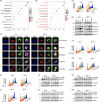


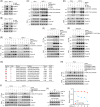
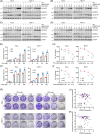
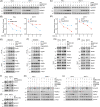
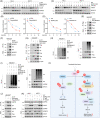
Similar articles
-
Biological functions and molecular mechanisms of MORC2 in human diseases.Mol Cells. 2025 Jan;48(1):100166. doi: 10.1016/j.mocell.2024.100166. Epub 2024 Dec 3. Mol Cells. 2025. PMID: 39637946 Free PMC article. Review.
-
Stabilization of MORC2 by estrogen and antiestrogens through GPER1- PRKACA-CMA pathway contributes to estrogen-induced proliferation and endocrine resistance of breast cancer cells.Autophagy. 2020 Jun;16(6):1061-1076. doi: 10.1080/15548627.2019.1659609. Epub 2019 Sep 6. Autophagy. 2020. PMID: 32401166 Free PMC article.
-
Acetylation of MORC2 by NAT10 regulates cell-cycle checkpoint control and resistance to DNA-damaging chemotherapy and radiotherapy in breast cancer.Nucleic Acids Res. 2020 Apr 17;48(7):3638-3656. doi: 10.1093/nar/gkaa130. Nucleic Acids Res. 2020. PMID: 32112098 Free PMC article.
-
Phosphorylation of Mcl-1 by CDK1-cyclin B1 initiates its Cdc20-dependent destruction during mitotic arrest.EMBO J. 2010 Jul 21;29(14):2407-20. doi: 10.1038/emboj.2010.112. Epub 2010 Jun 4. EMBO J. 2010. PMID: 20526282 Free PMC article.
-
Cyclin A and Nek2A: APC/C-Cdc20 substrates invisible to the mitotic spindle checkpoint.Biochem Soc Trans. 2010 Feb;38(Pt 1):72-7. doi: 10.1042/BST0380072. Biochem Soc Trans. 2010. PMID: 20074038 Review.
Cited by
-
Biological functions and molecular mechanisms of MORC2 in human diseases.Mol Cells. 2025 Jan;48(1):100166. doi: 10.1016/j.mocell.2024.100166. Epub 2024 Dec 3. Mol Cells. 2025. PMID: 39637946 Free PMC article. Review.
-
Novel Insights into the Role of Chromatin Remodeler MORC2 in Cancer.Biomolecules. 2023 Oct 15;13(10):1527. doi: 10.3390/biom13101527. Biomolecules. 2023. PMID: 37892209 Free PMC article. Review.
-
Multiple regulatory mechanisms, functions and therapeutic potential of chaperone-mediated autophagy.Theranostics. 2025 Feb 3;15(7):2778-2793. doi: 10.7150/thno.107761. eCollection 2025. Theranostics. 2025. PMID: 40083922 Free PMC article. Review.
-
Emerging roles of the chromatin remodeler MORC2 in cancer metabolism.Med Oncol. 2024 Aug 8;41(9):221. doi: 10.1007/s12032-024-02464-9. Med Oncol. 2024. PMID: 39117768 Review.
-
Transcriptomic profiles of single-cell autophagy-related genes (ATGs) in lung diseases.Cell Biol Toxicol. 2025 Feb 7;41(1):40. doi: 10.1007/s10565-025-09990-w. Cell Biol Toxicol. 2025. PMID: 39920481 Free PMC article.
References
-
- Jackson J, Patrick D, Dar M, Huang P. Targeted anti‐mitotic therapies: can we improve on tubulin agents? Nat Rev Cancer. 2007;7(2):107‐117. doi:10.1038/nrc2049 - DOI - PubMed
-
- Jordan M, Wilson L. Microtubules as a target for anticancer drugs. Nat Rev Cancer. 2004;4(4):253‐265. doi:10.1038/nrc1317 - DOI - PubMed
-
- Yu H. Regulation of APC‐Cdc20 by the spindle checkpoint. Curr Opin Cell Biol. 2002;14(6):706‐714. doi:10.1016/s0955‐0674(02)00382‐4 - DOI - PubMed
-
- Henriques AC, Ribeiro D, Pedrosa J, Sarmento B, Silva PMA, Bousbaa H. Mitosis inhibitors in anticancer therapy: when blocking the exit becomes a solution. Cancer Lett. 2019;440‐441:64‐81. doi:10.1016/j.canlet.2018.10.005 - DOI - PubMed
-
- Rieder C, Maiato H. Stuck in division or passing through: what happens when cells cannot satisfy the spindle assembly checkpoint. Dev Cell. 2004;7(5):637‐651. doi:10.1016/j.devcel.2004.09.002 - DOI - PubMed
Publication types
MeSH terms
Substances
LinkOut - more resources
Full Text Sources
Medical
Molecular Biology Databases
Miscellaneous
